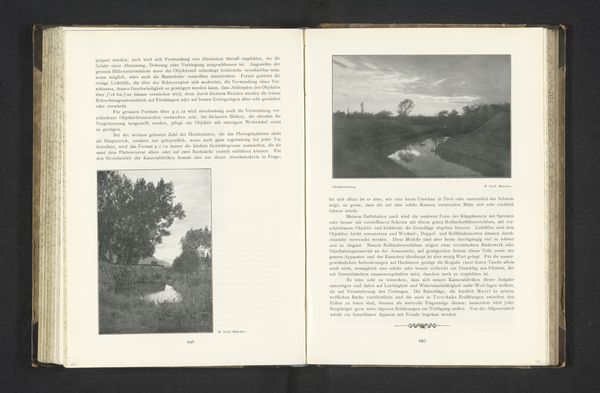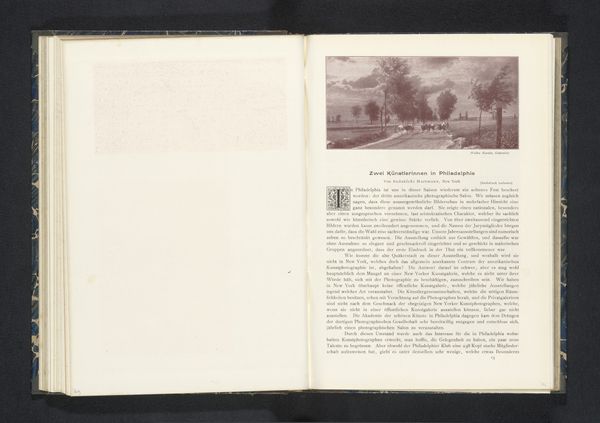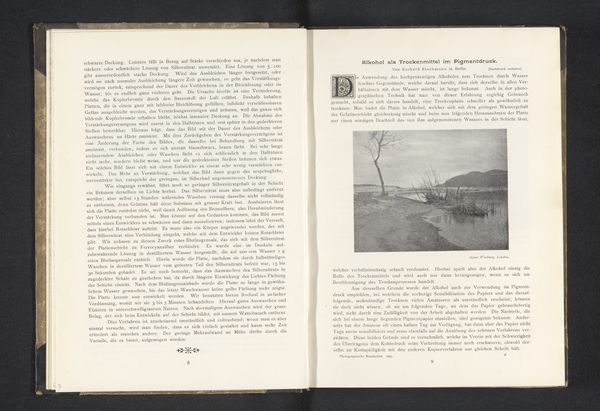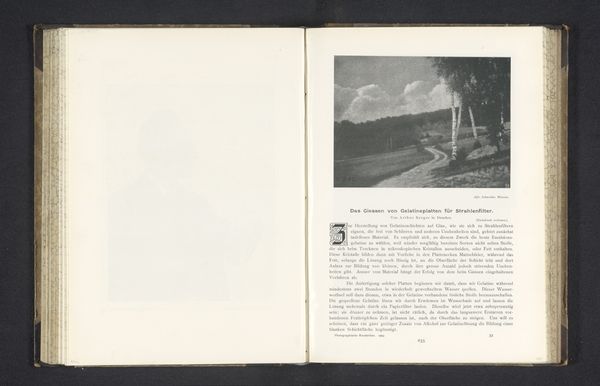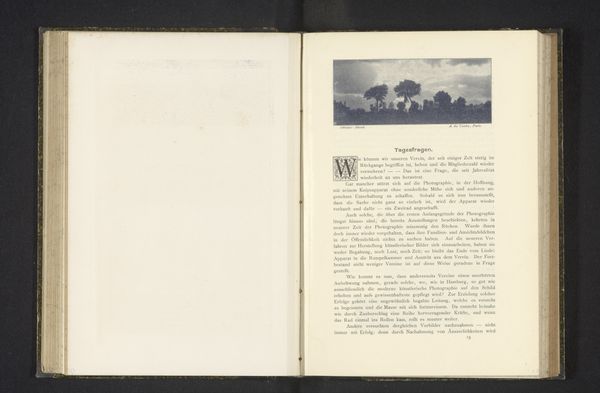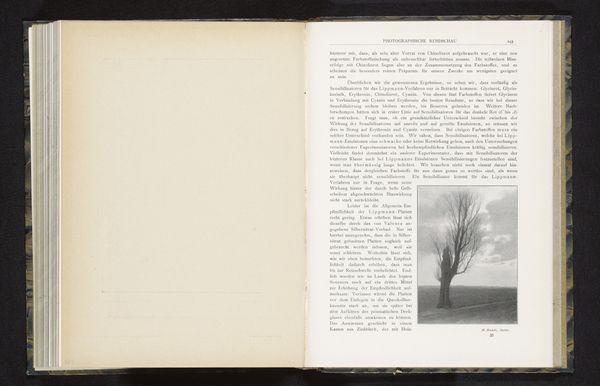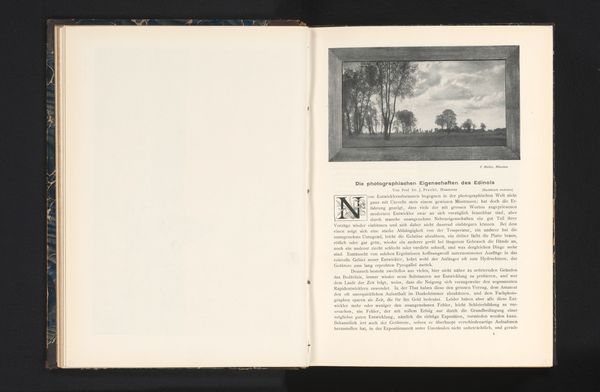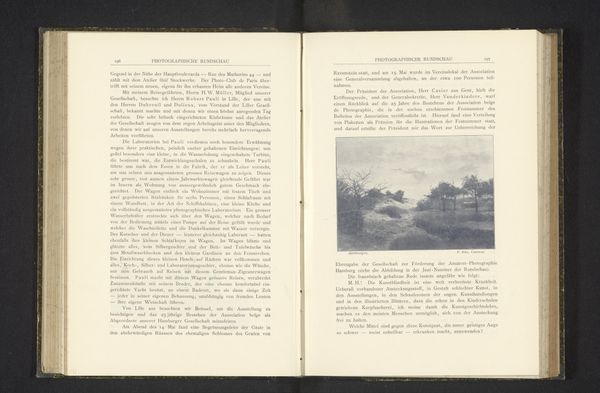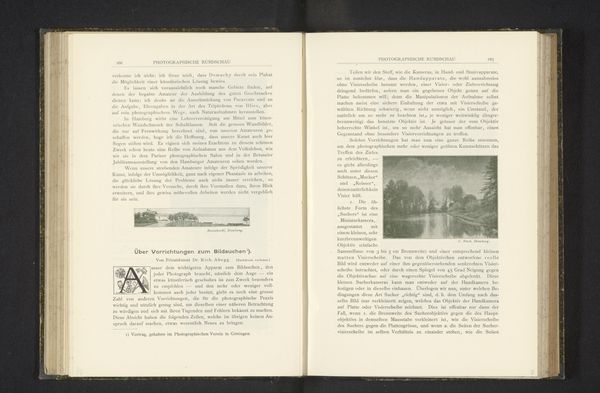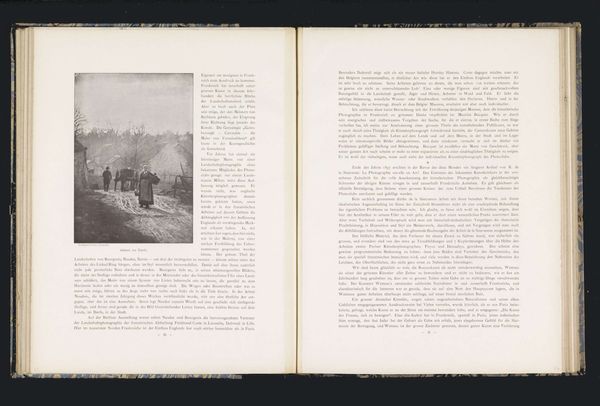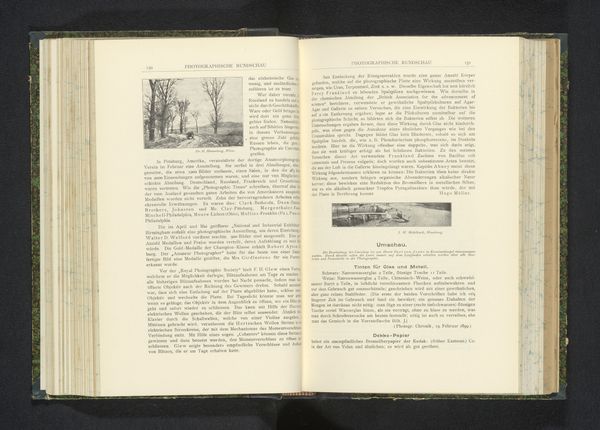
print, photography
#
pictorialism
# print
#
landscape
#
photography
#
road
Dimensions: height 102 mm, width 143 mm
Copyright: Rijks Museum: Open Domain
Curator: Looking at this early 20th-century photograph titled "Landweg met bomen, met op de achtergrond een huis," or "Country Road with Trees, with a House in the Background" by Albert Gottheil, I'm struck by its ethereal, almost dreamlike quality. Editor: Yes, that tonality gives it an immediate nostalgic quality. I'm drawn to the grainy texture of the print and how it speaks to early photographic processes and labor of production. Curator: Notice the road dominating the composition. It pulls you into the scene, doesn't it? A road can often symbolize a journey, or passage of time. Perhaps Gottheil is using it to represent a turning point. Editor: A turning point... possibly reflecting the societal shifts happening at the time through changes in agricultural technology, or the developing infrastructure that could alter lives of these villagers depicted? I’d be curious to examine if the material constraints of early photography such as developing practices or available paper played a role in generating the grainy texture and how it contrasts with other pictorialist artworks. Curator: Certainly, this grainy, almost blurred quality is characteristic of pictorialism, and its pursuit of artful imagery through soft focus and hand-manipulation in printing. Perhaps Gottheil aims to elevate photography to fine art status. The house in the distance, it reads almost like a beacon. I am not sure if it has particular symbolic or historic implications. Editor: Well, think about the cost involved in maintaining houses, printing photographs, even traversing a landscape by road in this era. Focusing on material accessibility reminds us that art historical interpretations of this landscape painting through iconographic study would perhaps differ greatly compared to someone inhabiting that physical space back then, who are burdened by labor and ownership issues. Curator: True, a good point. Editor: Analyzing how the artist uses technology in photographic printing, or if the workers or dwellers that populate these images have control or ownership over material, these considerations help disrupt conventional notions behind pictorial value in art history. Curator: Thinking about it that way has offered new insight into what this photograph represents. Editor: Agreed, this piece reveals the layers embedded within this single image, blending technical creation with enduring symbols and cultural interpretations, which only expands my perspective towards a piece such as this one.
Comments
No comments
Be the first to comment and join the conversation on the ultimate creative platform.
